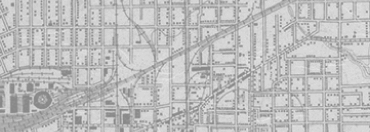


Back
Charles L. Bronson film
Original 8mm color home movie by Charles L. Bronson of the presidential motorcade the day of the assassination and scenes filmed the following day in Dealey Plaza.One of four known amateur films showing the moment of the fatal shot to President Kennedy, the Bronson film is the shortest of those eyewitnesses’ home movies and the one taken from the most distant perspective from the limousine. Bronson and his wife were in Dealey Plaza that day with both still and home movie cameras. With his Keystone home movie camera running at twelve frames per second, Bronson filmed a few seconds approximately six minutes before the arrival of the presidential parade. This significant sequence shows the flashing lights of an ambulance at the scene picking up the victim of an epileptic seizure. Bronson also inadvertently captured, in the background, the Texas School Book Depository. The next scenes show the presidential parade visible on Main Street, approaching the turn onto Houston, followed by the Kennedy limousine traveling along Houston Street, approaching the turn onto Elm. Bronson then filmed two seconds of the assassination This brief sequence ends as Mrs. Kennedy rises from her seat, moving towards the trunk of the limousine. Bronson, his wife and daughter Charlette returned the next day to capture more film and photographs of the plaza.
Charles L. Bronson film
11/22/1963 - 11/23/1963
Film
Gauge: 8mmCamera speed: 12 fps
Charles L. Bronson Collection/The Sixth Floor Museum at Dealey Plaza
2017.015.0001
Forty-five-year-old Charles Bronson, chief engineer of Varel Manufacturing in Dallas, brought two cameras to Dealey Plaza on November 22, 1963: a Leica Model III for still photographs and a Keystone Olympic K-25 for color home movies. He and his wife, Frances, stood atop a concrete pedestal at the southwest corner of Main and Houston streets. Bronson had had a lifelong dream to see a president and was eager to capture images of President Kennedy during his visit to Dallas. With his Keystone home movie camera running at twelve frames per second, Bronson took a few seconds of atmosphere approximately six minutes before the arrival of the presidential parade. This significant sequence shows the flashing lights of an ambulance at the scene picking up the victim of an epileptic seizure (an incident which was later made part of a conspiracy theory). Bronson also inadvertently captured, in the background, the Texas School Book Depository. Because there was a possibility of movement in this brief glimpse of the sixth floor window minutes before the assassination, this film was of interest to the House Select Committee on Assassinations towards the end of their investigation as well as later independent film analyses. The next film sequences shows the presidential parade visible on Main Street, approaching the turn onto Houston, followed by the Kennedy limousine traveling along Houston Street, approaching the turn onto Elm. Bronson then filmed two seconds of the assassination, becoming one of only four known home movie photographers to have captured the fatal shot on film. This brief sequence ends as Mrs. Kennedy rises from her seat, moving towards the trunk of the limousine. Though this home movie provides the most distant perspective of the assassination, the Bronson film remains relevant more than half a century later as it disproves an ongoing theory suggesting that a Secret Service agent in the follow-up car accidentally fired the shot that killed President Kennedy.Bronson and his wife, Frances, returned to Dealey Plaza the following day, Saturday, November 23, 1963. They were accompanied by their daughter, Charlette. There Bronson took two additional still photographs from atop the same concrete pedestal where he had witnessed the assassination the day before. He also finished up his roll of film by filming additional scenes from the concrete pedestal as well as around Dealey Plaza, capturing images of the surrounding buildings and floral tributes and memorials. - Stephen Fagin, Curator
Object featured in special exhibition, Two Days in Texas, November 8, 2023 through September 8, 2024.
Charles L. Bronson film
Original 8mm color home movie by Charles L. Bronson of the presidential motorcade the day of the assassination and scenes filmed the following day in Dealey Plaza.One of four known amateur films showing the moment of the fatal shot to President Kennedy, the Bronson film is the shortest of those eyewitnesses’ home movies and the one taken from the most distant perspective from the limousine. Bronson and his wife were in Dealey Plaza that day with both still and home movie cameras. With his Keystone home movie camera running at twelve frames per second, Bronson filmed a few seconds approximately six minutes before the arrival of the presidential parade. This significant sequence shows the flashing lights of an ambulance at the scene picking up the victim of an epileptic seizure. Bronson also inadvertently captured, in the background, the Texas School Book Depository. The next scenes show the presidential parade visible on Main Street, approaching the turn onto Houston, followed by the Kennedy limousine traveling along Houston Street, approaching the turn onto Elm. Bronson then filmed two seconds of the assassination This brief sequence ends as Mrs. Kennedy rises from her seat, moving towards the trunk of the limousine. Bronson, his wife and daughter Charlette returned the next day to capture more film and photographs of the plaza.
Charles L. Bronson film
11/22/1963 - 11/23/1963
Eyewitnesses
Motorcade
Assassination
Films
Home movie
Dealey Plaza
Trip to Texas
Bronson, Charles
Kennedy, John F.
Fort Worth Chamber of Commerce
Dallas
Film
Gauge: 8mmCamera speed: 12 fps
Charles L. Bronson Collection/The Sixth Floor Museum at Dealey Plaza
2017.015.0001
Forty-five-year-old Charles Bronson, chief engineer of Varel Manufacturing in Dallas, brought two cameras to Dealey Plaza on November 22, 1963: a Leica Model III for still photographs and a Keystone Olympic K-25 for color home movies. He and his wife, Frances, stood atop a concrete pedestal at the southwest corner of Main and Houston streets. Bronson had had a lifelong dream to see a president and was eager to capture images of President Kennedy during his visit to Dallas. With his Keystone home movie camera running at twelve frames per second, Bronson took a few seconds of atmosphere approximately six minutes before the arrival of the presidential parade. This significant sequence shows the flashing lights of an ambulance at the scene picking up the victim of an epileptic seizure (an incident which was later made part of a conspiracy theory). Bronson also inadvertently captured, in the background, the Texas School Book Depository. Because there was a possibility of movement in this brief glimpse of the sixth floor window minutes before the assassination, this film was of interest to the House Select Committee on Assassinations towards the end of their investigation as well as later independent film analyses. The next film sequences shows the presidential parade visible on Main Street, approaching the turn onto Houston, followed by the Kennedy limousine traveling along Houston Street, approaching the turn onto Elm. Bronson then filmed two seconds of the assassination, becoming one of only four known home movie photographers to have captured the fatal shot on film. This brief sequence ends as Mrs. Kennedy rises from her seat, moving towards the trunk of the limousine. Though this home movie provides the most distant perspective of the assassination, the Bronson film remains relevant more than half a century later as it disproves an ongoing theory suggesting that a Secret Service agent in the follow-up car accidentally fired the shot that killed President Kennedy.Bronson and his wife, Frances, returned to Dealey Plaza the following day, Saturday, November 23, 1963. They were accompanied by their daughter, Charlette. There Bronson took two additional still photographs from atop the same concrete pedestal where he had witnessed the assassination the day before. He also finished up his roll of film by filming additional scenes from the concrete pedestal as well as around Dealey Plaza, capturing images of the surrounding buildings and floral tributes and memorials. - Stephen Fagin, Curator
Object featured in special exhibition, Two Days in Texas, November 8, 2023 through September 8, 2024.










